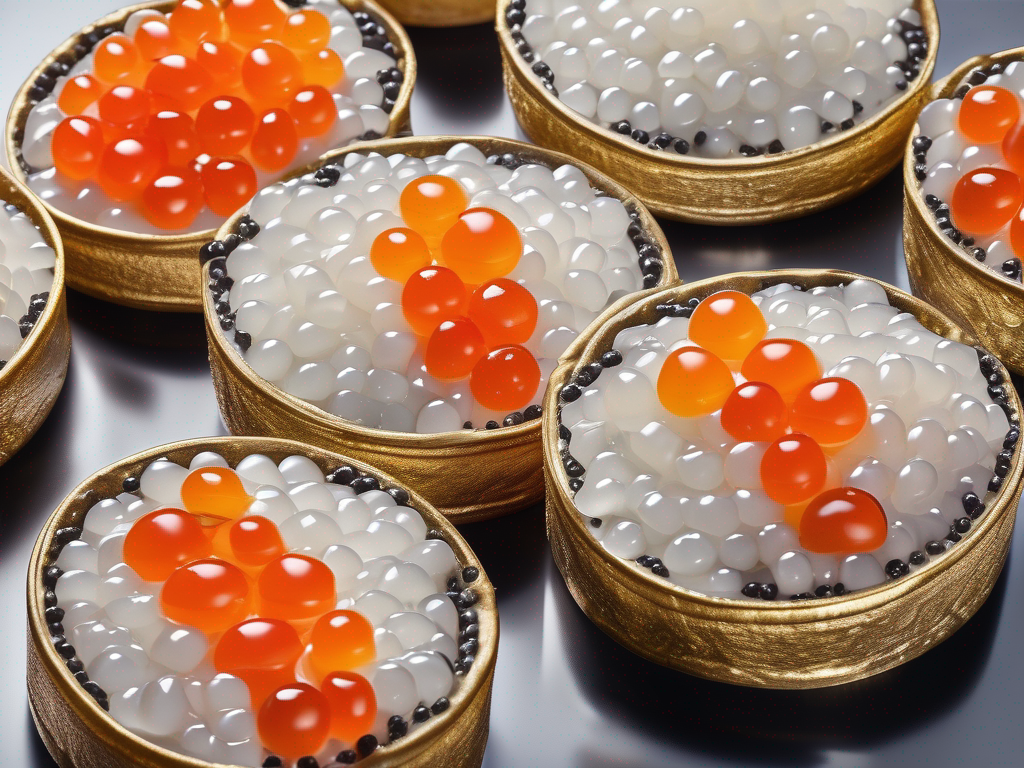
The Ultimate Guide on How to Properly Store Caviar for Maximum Freshness
Get Your Free Food Safety Cheat Sheet
30 most common foods with instant answers. Print it and stick it on your fridge—completely free!
The Ultimate Guide on How to Properly Store Caviar for Maximum Freshness
When it comes to luxury foods, caviar is undoubtedly one of the most exquisite and sought-after delicacies in the world. With its delicate flavor and unique texture, caviar is a delicacy that deserves the utmost care and attention when it comes to storage. Proper storage is essential to maintain the freshness and quality of caviar, ensuring that you get to enjoy its rich taste to the fullest. In this comprehensive guide, we will explore the best practices for storing caviar to preserve its flavor and texture. (Caviar)
Understanding Caviar Storage
Caviar is a perishable product that requires specific storage conditions to maintain its quality. Improper storage can lead to spoilage, loss of flavor, and texture degradation. Here are some key factors to consider when storing caviar:
Factors Affecting Caviar Freshness
- Temperature: Caviar is highly sensitive to temperature fluctuations. It should be stored at a consistent temperature to prevent spoilage.
- Light: Exposure to light can accelerate the deterioration of caviar. It is essential to store caviar in a dark environment.
- Air: Caviar should be protected from exposure to air, as it can cause oxidation and impact the taste.
- Moisture: Excess moisture can lead to the growth of bacteria and mold in caviar. It is crucial to keep caviar dry during storage.
Best Practices for Storing Caviar
To ensure the maximum freshness and flavor of caviar, follow these best practices for storage:
1. Refrigeration
- Store in the coldest part of the refrigerator: Keep caviar in the coldest section of the refrigerator, usually the back or the bottom shelf.
- Use airtight containers: Transfer caviar to an airtight container to protect it from exposure to air and odors in the fridge.
- Avoid freezing: Freezing caviar can alter its texture and flavor, so it is best to store it in the refrigerator.
2. Proper Packaging
- Keep the original packaging: If caviar comes in a tin or jar, keep it in its original packaging to maintain freshness.
- Use plastic wrap: If the original packaging is damaged, cover the caviar tightly with plastic wrap to prevent air exposure.
3. Avoid Cross-Contamination
- Store separately: Keep caviar away from strong-smelling foods in the refrigerator to prevent flavor transfer.
- Use a designated caviar spoon: When serving caviar, use a non-metallic spoon to avoid tainting the delicate flavor.
4. Monitoring Freshness
- Check the expiration date: Always check the expiration date on the packaging and consume caviar before it expires.
- Inspect for signs of spoilage: Look for any changes in color, texture, or odor, which may indicate spoilage.
5. Transporting Caviar
- Keep chilled: When transporting caviar, use a cooler bag with ice packs to maintain a cold temperature.
- Avoid direct sunlight: Shield caviar from direct sunlight during transportation to prevent heat exposure.
Conclusion
Proper storage is essential to preserve the delicate flavor and texture of caviar. By following the best practices outlined in this guide, you can ensure that your caviar stays fresh and delicious for longer. Remember to keep caviar refrigerated, well-packaged, and away from air, light, and moisture to enjoy this luxurious delicacy to the fullest.
For more information on caviar and other gourmet foods, visit our caviar section. Happy indulging! (Caviar)
Related Posts
Here are some other articles you might find helpful:
Authoritative Food Safety References
These agencies and university labs inform every tip and health precaution we publish.
USDA FoodKeeper – Cold Storage Guidelines
Official refrigerator, freezer, and pantry timelines maintained by the U.S. Department of Agriculture.
Visit USDA FoodKeeperFDA Produce Safety Rule & Grower Guidance
Field-to-fridge handling practices that prevent contamination of fruits, vegetables, and leafy greens.
Visit FDA Produce SafetyCDC Foodborne Illness Prevention Hub
Surveillance-backed guidance on pathogens, symptoms, and steps to reduce foodborne illness risk.
Visit CDC Food SafetyUC Davis Postharvest Technology Center
University research detailing optimal storage atmospheres for produce after harvest.
Visit UC Davis PostharvestPenn State Extension – Home Food Preservation & Safety
Peer-reviewed extension bulletins on safe canning, chilling, and reheating practices.
Visit Penn State ExtensionGet Your Free Food Safety Cheat Sheet
30 most common foods with instant answers. Print it and stick it on your fridge—completely free! Want more? Upgrade to the complete guide with 70+ foods.
Scan your food directly and get instant safety info using our AI-powered camera feature.